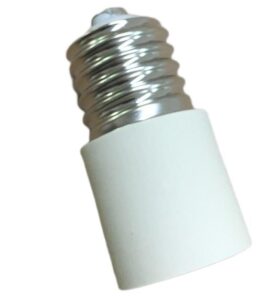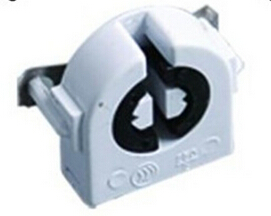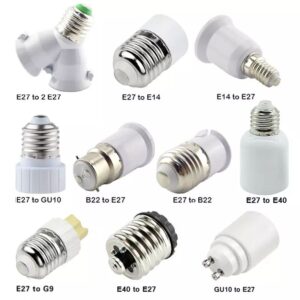Yes, an E27 bulb is compatible with an E26 socket due to their similar size and thread design.
E26 and E27 sockets and bulbs are nearly identical in their threading. The difference in their diameters is minimal, so they are interchangeable in most cases. Let’s go deeper.

Can I use a 60W bulb in a 250W lamp?
Yes, using a 60W bulb in a socket rated for 250W is safe. The wattage rating on the lamp or socket indicates the maximum wattage it can handle, not the required wattage. Using a bulb with lower wattage than the maximum rating will work without any issues, as the socket can easily support it. This setup may also extend the lifespan of the bulb, as the socket is designed to handle more heat and energy.
Using a lower-wattage bulb, such as 60W, can also reduce energy consumption and generate less heat, which is advantageous if you don’t require the full brightness of a higher-wattage bulb.
What wattage is an E27 bulb?
E27 bulbs come in a variety of wattages, typically ranging from 5W to 100W or more, depending on the type of bulb, such as LED, incandescent, or halogen. Traditional incandescent E27 bulbs might range from 40W to 100W, while energy-efficient LEDs with an E27 base might consume only 5W to 20W but produce light equivalent to 40W to 100W incandescent bulbs.
The wattage of the bulb you choose should match the requirements of the fixture and the amount of light you need, but it’s important not to exceed the fixture’s maximum wattage rating.
What fits in an E26 socket?
E26 sockets are designed to accommodate any E26-base bulb, which is the standard screw-in base used in many residential lighting fixtures in North America. This includes incandescent, halogen, CFL, and LED bulbs with a medium screw base. While the E26 is the standard in the U.S. and Canada, it is also compatible with E27 bulbs because the threading and socket dimensions are nearly identical.
The E26 socket supports various wattage bulbs, so it is important to ensure that the bulb’s wattage does not exceed the socket’s maximum wattage rating.

What size socket is an E27 bulb?
An E27 bulb fits into an E27 socket, which is commonly used in Europe and other regions where 220-240V is standard. The “E” in E27 stands for Edison, referring to the screw base, while the “27” refers to the 27mm diameter of the base. This size is one of the most common worldwide, used for standard lighting applications such as table lamps, ceiling lights, and floor lamps.
E27 sockets are similar in size to E26 sockets, and in most cases, E27 bulbs will also fit into E26 sockets, especially in regions like North America where E26 sockets are standard.
Is bulb base E26 or E27?
The bulb base can be either E26 or E27, depending on the country and the voltage system. E26 bulbs are more common in North America, where 120V is the standard, while E27 bulbs are prevalent in Europe and other countries that use 220-240V. Despite this regional difference, the two base types are almost identical, with E26 having a 26mm diameter and E27 having a 27mm diameter.
This minimal difference in size allows for compatibility between the two. E26 and E27 bulbs can generally be used interchangeably in both E26 and E27 sockets.
Can an E27 bulb fit an E26 socket?
Yes, an E27 bulb can typically fit into an E26 socket without any issues. The thread size and overall dimensions are close enough that the bulb will screw in securely and make proper electrical contact. The only slight difference is the 1mm variation in diameter, which is usually negligible.
However, it’s important to check the voltage requirements when using E27 bulbs in E26 sockets, especially if you’re using them in regions with different voltage standards. E27 bulbs are often designed for 220-240V systems, while E26 sockets are used in 120V systems, so using the wrong voltage can damage the bulb or fixture.

What is the difference between E26, E27, and A19?
- E26 and E27 refer to the socket size and base of the bulb. E26 is standard in North America (26mm diameter), while E27 is common in Europe and other countries (27mm diameter). Despite the slight difference, they are mostly interchangeable.
- A19 refers to the shape and size of the bulb itself. The “A” stands for “Arbitrary” or “A-line,” a standard bulb shape, and “19” refers to the diameter of the bulb in eighths of an inch. A19 bulbs are typically 2.375 inches (60mm) in diameter and are one of the most common bulb shapes for household lighting.
An E26 or E27 bulb can have an A19 shape, meaning the bulb has a medium screw base (E26 or E27) and is shaped like a standard household bulb (A19). A19 bulbs are widely used in general lighting fixtures, such as table lamps, ceiling fixtures, and wall sconces.
Conclusion
E26 and E27 bulbs and sockets are interchangeable with only slight size differences.













